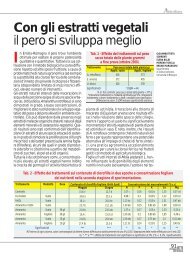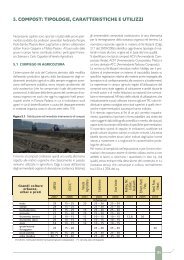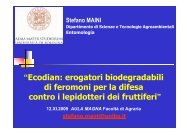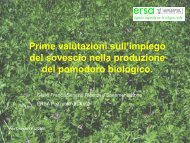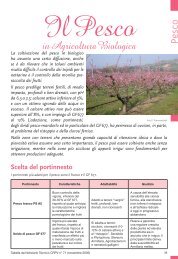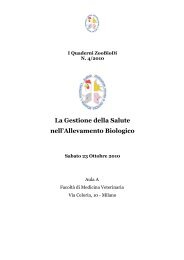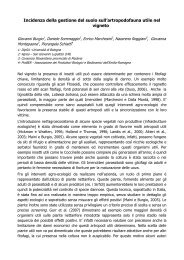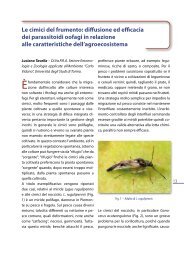You also want an ePaper? Increase the reach of your titles
YUMPU automatically turns print PDFs into web optimized ePapers that Google loves.
Petria 20 (1), 1-72 (2010) – Atti Convegno - Ancona, 26 Febbraio/February 2010fixed frequency, alternating with copper treatments in the phenological growth stagesat higher risk of infection of downy mildew. The products tested by themself were:potassium bicarbonate (Armicarb) and orange extract (Croplife). In all of the trials, weconsidered an untreated control, to follow the course of infection, and a standard farmreference treatment, where the application of copper compounds have been carriedout according to the usual farm practice. Over the three years, anti-downy mildeweffectiveness was evaluated for the formulations under conditions of different epidemicpressures. In conditions of high pressure of disease, only the copper formulations usedwith the standard treatment provided good anti-downy mildew protection, with theuse of the natural substances tested would not be recommended, both alone or incombination with copper. The use of natural substances alternative to copper waspossible, however, when the risk of infection was low. Brotomax associated withcopper formulations ensured the best results, combining good anti-downy mildewactivity with low cost at the end of the crop cycle. All of the formulations testedalways guaranteed a copper quantity under 6 kg/ha, which is the maximum use/yearlimit imposed by the European Community regulations.For the grapevines and for all of the other perennial crops, these regulationsprovide the possibility to apply the maximum levels for copper compounds over aperiod of 5 years. Carefully consideration should thus be given to the possibility ofusing natural substances as an alternative to copper compounds when the environmentalconditions are not favorable to development of Plasmopara viticola. In this way, itwill be possible to economize on the copper use, keeping it for years characterizedby high risk of infection, and even at doses higher than 6 kg/ha. In this way it willremain possible to respect the limits of copper imposed by the European Communityregulations.Key words: Anti-downy mildew protection, Natural products, Organic farming,Treatments costs.Lavori citati/ReferencesLa Torre A., G. Spera, M. Gianferro, M. Scaglione, 2007. More years of field trialsagainst Plasmopara viticola in organic viticulture. In: Proceedings of the 59 thInternational Symposium on Crop Protection, Ghent University, Belgium,May, 72(4), 901-908.Scaglione M., A. La Torre, A. Coramusi, 2008. I composti rameici in agricolturabiologica: stato attuale e prospettive. Petria 18(1), 89-135.Spera G., A. La Torre, D. Lolletti, A. Coramusi, 2006. Valutazione dell’attività diformulati antiperonosporici in viticoltura biologica. VigneVini 5, 63-68.48



